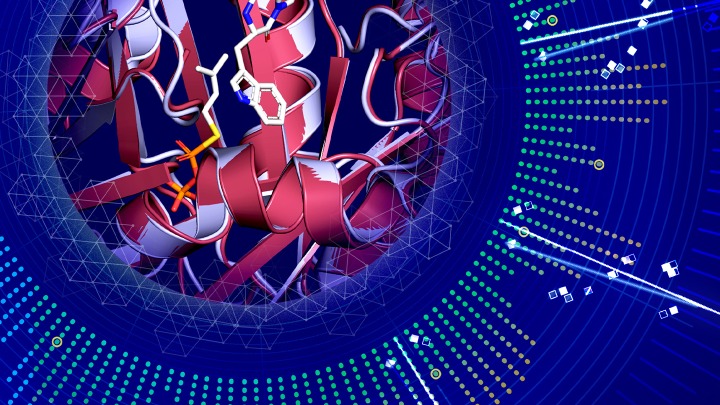
Researchers merge data science and synthetic chemistry to produce more powerful biocatalytic tools
A team of researchers from the University of Michigan and University of Utah has developed a new method for optimizing the tools that nature uses to build chemical compounds.
When chemists want to produce a new compound, they use chemical catalysts to introduce groups of atoms to specific locations on a simple starting material, or substrate.
When living organisms produce a chemical compound, they employ a similar process using biocatalysts: enzymes that accelerate chemical reactions within cells to introduce new atomic groups to a starting material. These enzymes naturally perform reactions efficiently and with extremely high specificity, only introducing atomic groups in one exact position.
“The beauty of the biocatalyst we’ve identified from bacteria or fungi is that they've evolved over millions and millions of years to be very specific. And that's what we want in any catalyst,” explains David Sherman, Ph.D., a faculty member at the University of Michigan Life Sciences Institute. “We want it to do its job where it needs to be done, perfectly every time, to make a molecule that could potentially turn into a drug.”
Sherman’s lab at the LSI investigates how microorganisms such as fungi and bacteria build their natural chemical products, and how these methods could be harnessed to develop new therapies for human diseases.
But to realize the full potential of biocatalysts in a lab setting, chemists need them to also perform new jobs—react with substrates that they perhaps have not evolved to interact with—without sacrificing specificity or efficiency.
Through a collaboration with University of Utah chemistry professor Matthew Sigman, Ph.D., Sherman and his colleagues have developed a new method for evolving better, more responsive biocatalysts that work with a range of substrates.
The researchers began with an enzyme called NotF. This enzyme transforms starting materials into biologically active compounds by adding five carbon building blocks, called a prenyl group, at one precise location on a molecule.
“This scaffold is the entry into all sorts of interesting compounds, so it’s a really valuable reaction for developing new drugs and other materials,” says Sherman, who is also a professor of medicinal chemistry in the U-M College of Pharmacy, professor of chemistry, professor of microbiology and immunology in the Medical School, and professor of chemistry in the College of Literature, Science, and the Arts.
Then they ran reactions with NotF on dozens of different substrates and measured NotF’s success rate at introducing the prenyl group in the right place and in high quantities.
“We saw this broad range of reactivity, which gives us a good starting point,” Sherman explains. “So the question is: How can we improve this reactivity?”
Researchers have developed methods for mutating enzymes in ways that make them more effective with new substrates, including the Nobel-prize winning method of directed evolution. But the team wanted to try a new approach, Sherman says.
Using results from the reactivity experiments, along with genetic and structural biology data, Sigman developed a statistical model to explain the varying levels of reactivity they observed with the different substrates. The team then applied that model in a forward-looking approach, employing data science tools to predict the precise changes that would improve NotF’s reactivity.
“Basically, the statistical model could suggest where the reaction might run into clash points between the enzyme and substrate. This allows us to predict how to manipulate NotF to overcome those specific clashes,” Sigman says. “The improvements we saw were as good as, if not better than, what we would expect from an initial round of directed evolution.”
The team believes this new strategy will have wide applications in the field of biocatalysis, helping develop more efficient and effective biocatalysts that can perform important chemical reactions in a less toxic, less expensive manner than traditional synthetic chemistry.
“We look forward to expanding the scope of this approach to other systems,”, Sherman says. “No doubt we are going to be able to access a lot of very powerful biocatalytic chemistry. It’s a new direction in protein engineering.”
Go to Article
Data science-driven analysis of substrate-permissive diketopiperazine reverse prenyltransferase NotF: Applications in protein engineering and cascade biocatalytic synthesis of (–)-eurotiumin A, Journal of the American Chemical Society. DOI: 10.1021/jacs.2c06631


